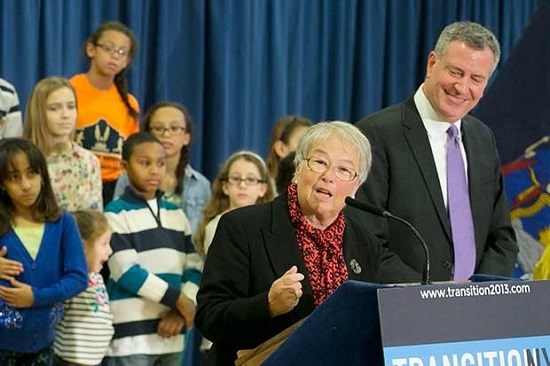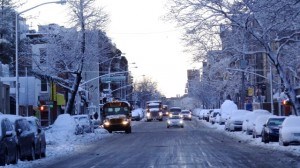
Two weeks ago, February 13 to be exact, newly appointed NYC Chancellor of Schools Carmen Farina and NYC Mayor Bill de Blasio made a controversial decision to keep NYC public schools open in the midst of a predicted winter storm that blasted the entire east coast, a storm that dumped one to two feet of snow across all five boroughs and a storm that brought ice and bone-chilling temperatures.
Private and Catholic schools were closed, businesses were closed, and activities and classes across the city were canceled. The Mayor also made a public statement encouraging all New Yorkers to use public transportation to get to work, buses, subways, the Long Island Railroad, and MetroNorth.
The decision to keep NYC public schools open on a wintery day (a day that was declared a state of emergency) sent shock amongst NYC public school parents, teachers, administrators and students.
What reasons could Chancellor Farina and Mayor De Blasio have for keeping school open on a day that was clearly a treacherous day unsafe commute for children and a "snow day" in everyone else's mind?

In a statement to the press, Chancellor Farina stated that it was a "beautiful day out there" and that because many kids are so poor, their only chance for a hot lunch is at school. Their parents are unable to take care of them, if they stay home.
She stated that "Parents have to go to work. You didn't hear of any businesses in the city of New York closed down. Macy's was open. So if people can go shopping and go to work, then kids can go to school."
After hearing this public statement from the Chancellor of NYC Public Schools, I asked myself So, what then is the purpose of school? On this unsafe blistery day, the Chancellor of NYC Schools kept schools open in order for students to have a place "to go", a place "to get a hot meal." By the way, citywide attendance that day was approximately 45 percent!
One hundred years ago, schools were thought of as institutions of learning, places where students went to learn to read and write, places where students developed their cognitive and critical thinking skills, and even places where students developed their social and emotional skills.
![(A year after the Supreme Court?s Brown vs. Board of Education ruling ended school segregation, first-graders recite the Pledge of Allegiance in 1955 at Gwynns Falls Elementary School.) [Source:Richard Stacks, Baltimore Sun]](https://www.vmcdn.ca/f/files/bkreader/import/2014_02_baltimore-integration.jpg;w=960)
Photo:Richard Stacks, Baltimore Sun
Schools were certainly not places to "babysit" children while their parents went to work nor were they thought of as places for students to get "hot meals." So, what has changed?
I believe that schools are now considered "one-stop-shops" and are relied upon to fix the ills of society, because the government cannot fix these ills alone.
In addition, with the breakdown of the nuclear family, increase in divorce rates, the rise in childcare costs, and the increase in poverty in urban communities, schools have been forced to create programs/strategies to address these issues.
Schools have now evolved to institutions that take care of the "whole child," including their social, emotional, and physical development. Some schools are safe spaces for families to send their children to every day, especially if children are being raised in unsafe or unhealthy environments.
In some schools in NYC, "Lyfe Centers" (childcare centers) have popped up, where young teenage mothers can drop their babies off for the school day while the mothers attend school themselves.
On Thursday, February 13, I awoke to a blizzard and it took me two hours to get to school (I used mass transit by the way) and arrived to a day with less than half my students in attendance.
If the reason was to keep schools open to offer hot meals to students and a place to go to while their parents went to work, then I question the less than 50% attendance rate that day.
If the conditions were safe for travel (which both Chancellor Farina and Mayor Bill de Blasio thought in their press conferences as such), then why didn't we have 100% attendance that day?
Perhaps because it was indeed unsafe for travel.
And despite the hot meal and working parents, families kept their children home that day because there realized that they are just some days where safety and convenience outweigh a chance for babysitting and a hot meal.



